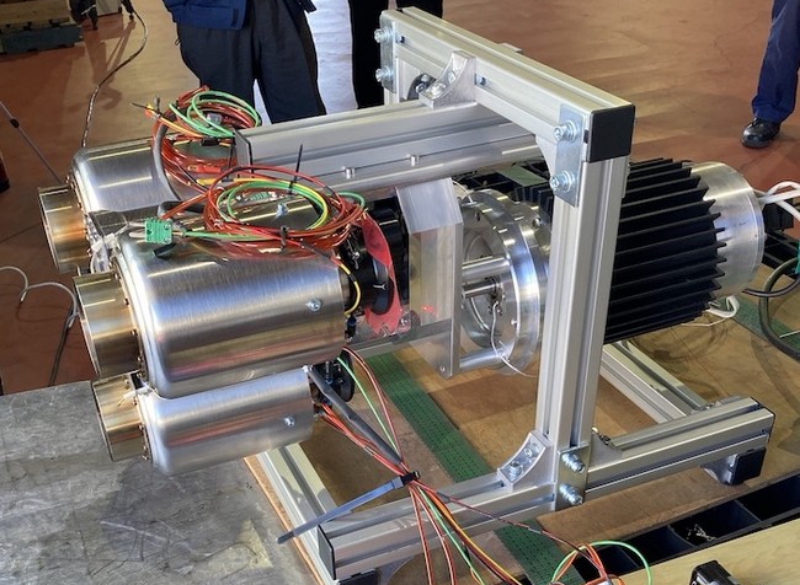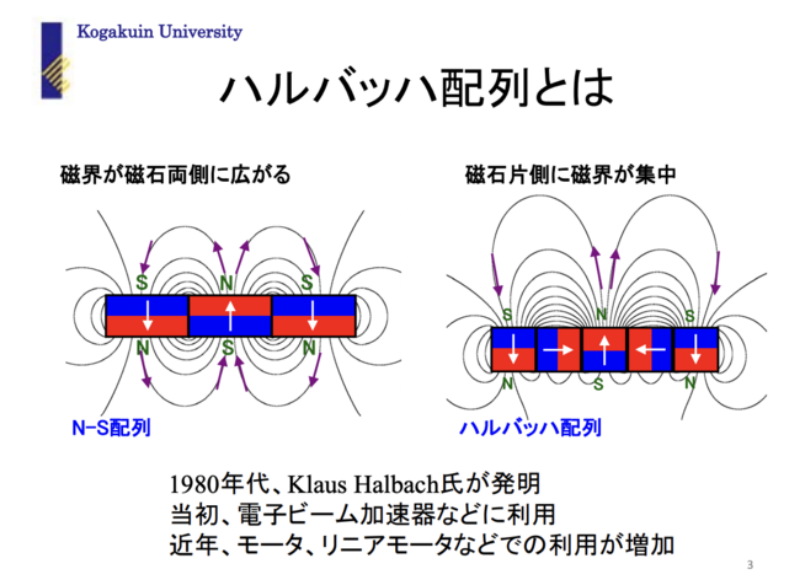 Aero Development Japan Co., Ltd
Aero Development Japan Co., Ltd
. is developing a Halbach generator and gas turbine power for heavy and long-distance drones. The company has succeeded in the operation test of the combined hybrid power unit.
At the same time, it also succeeded in the operation test of ESC, a motor for high voltage propellers of DC300V (AC200V) class for drones. Development of the hybrid power system, which combines this unit with a propeller motor and ESC, is proceeding smoothly with the goal of flying a large drone with a total weight of over 150 kg carrying 50 kg of luggage for 60 minutes.
Hybrid power system business for large drones undertaken by ADJ
ADJ is a startup founded in 2018 and is developing hybrid power systems (hybrid power units and propeller motors / ESCs) for large drones. Most drones up to now have a total weight of 25 kg or less, and their applications have been limited to aerial photography and surveying. On the other hand, there are increasing expectations for the realization of a future in which heavy drones will fly for a long time, such as transporting goods to areas where the distribution network is not well-developed and transporting emergency goods in the event of a disaster.
Possibility of hybrid power system for large drones found in a wide view of the industry
Representative Tanabe gained a career at the Bank of Japan and served as the manager of the Nagasaki branch. Among them, we focused on industrial surveys all over Japan. Japan is dotted with material technology and processing technology that boasts the world’s top class industrial product level, so we would like to bring them together to create a major industry. With such passion, we entered the large drone industry by making full use of the financial know-how cultivated over many years and the network that extends to the political and financial academia.
“While the large drone industry is still in its infancy, emerging manufacturers are rapidly emerging overseas. On the other hand, no one is still in full swing as the essential power source needed to fly heavy drones for long periods of time. We have not started. While collecting information by making full use of our wide network, we found room for entry into power systems for large drones.”
A completely different approach to hybrid power systems
The bottleneck in the social implementation of large drones was exactly the “power source” that ADJ is working on. Due to the restrictions on the weight energy density (battery capacity per unit weight) of existing lithium-ion batteries, the time that can be flown is limited even if the battery capacity is increased. In order for heavy drones to fly for a long time, a power source with a weight output density (power generation amount per unit weight) that exceeds that of lithium-ion batteries has been required.
Therefore, ADJ focused on the approach of combining a small gas turbine engine and a Halbach generator (*) to generate electricity. A gas turbine engine (90 to 100,000 rpm) that rotates at high speed can drive a small but high-performance generator with a special magnet array called the Halbach array, which can exceed a weight output density of 1 kW / kg. It has sex. The development of power sources for drones using gas turbine engines and Halbach generators will be an advanced initiative not only in Japan but also in the world.
* About the Halbach generator
In a magnet array (called a Halbach array) in which the magnetic poles are rotated at a predetermined angle and arranged in a row, the magnetic flux on the back side of the array is applied to the front side, and a smooth and strong magnetic field is generated on the front side. By combining this magnetic field with a coreless coil, the output voltage of the generator does not drop even if a large current is taken out, a generator with less vibration and noise can be realized, and a weight reduction of about 30% is realized. This technology is based on the patented invention of Professor Morishita of Kogakuin University, and the license of the Halbach generator is owned by the ADJ development partner.
Succeeded in partial load test of hybrid power unit prototype
On February 25, 2021, at a partner factory in Chikusei City, Ibaraki Prefecture, ADJ conducted a partial load operation test of the hybrid power unit under development, and extracted power from the fuel input to the small gas turbine through a generator for propellers. I succeeded in rotating the motor. On the day of the event, Mr. Izu, the founder of enRoute, Site Tech, which is working on the development of large-scale drones, JUIDA (UAS Industry Promotion Council), and other drone-related people also visited and received high praise for the results. It was.
Representative of Atrac Lab Co., Ltd., Mr. Tomoyuki Izu said:
In addition to drones, when finely controlling with a computer or AI, electrification of power is becoming indispensable, and I think that energy conversion by a small generator is very wonderful. I think that the technology that has increased the rotation speed to reduce the size of the generator and the motor technology that can make good use of the high voltage exceeding 200V with a small motor have also become a breakthrough for the electric motor.
Mr. Kunio Saito, Representative of Sighttech Co., Ltd. commented:
Using a 200V specification motor, ESC400V / 15A, I confirmed the thrust of 13kgf in the explanation of the thrust of one motor, 21kgf, and the output during hovering. It can be estimated that even with one motor of 13 kgf, our aircraft YOROI 12D1750F can fly for one hour with a system mass of 30 kg, fuel of 16 L, and luggage of 40 kg. By all means, I think you should test it with our aircraft.
Mr. Yasuhiro Senda, Vice President of JUIDA remarked:
I was surprised that the sound of the engine without the silencer was quiet even after 50,000 rpm. As far as the weight output density is known, it can be touted as the world’s highest class lightweight and high output hybrid power unit. The ESC that controls the output AC200V and the power system combined with the dedicated AC motor can provide a great degree of freedom in the design and development of large drones and “flying cars”, which is extremely difficult to achieve with lithium batteries and fuel cells. I hope that this will be an innovative technology originating in Japan that is drawing attention from around the world.
At the same time as the hybrid power unit, we also succeeded in the operation test of the motor propeller that rotates at DC300V (AC200V) class. Until now, most of the drones were for low voltage (about DC50V) (according to our research), but this product makes it possible to efficiently supply the high voltage power of the hybrid power unit to the propeller motor as it is. As a result, the current can be significantly reduced, making the wiring smaller and lighter, eliminating the need to mount a voltage converter, and mounting a larger payload. We are preparing to install it in a drone as a hybrid power system that combines a hybrid power unit with a high-voltage motor and ESC module.
Drone equipped with hybrid power system goes to test flight
As the next step toward the social implementation of the ADJ hybrid power system we are developing, we are planning a flight test of a hybrid power drone equipped with this system in April 2021.
If we can stably fly a hybrid powered drone with a total weight of over 150 kg, it will be a big step to open up new markets such as logistics and disaster response. This test flight will be an important position for the realization of such a future.
Source: Press Release

